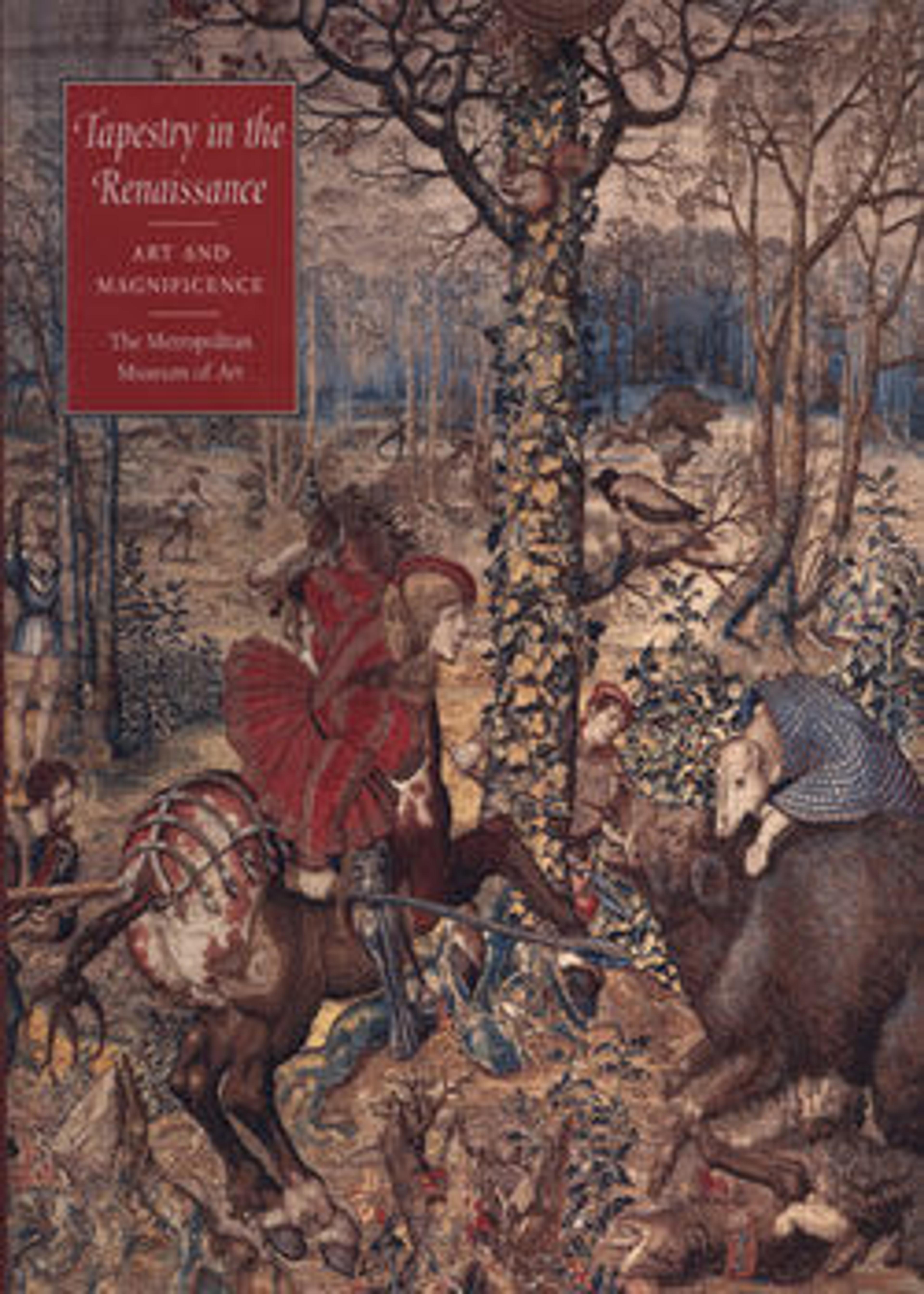
Tapestry in the Renaissance: Art and Magnificence
Tapestries were a principal aspect of the ostentatious "magnificence" used during the Renaissance by powerful religious and secular rulers to broadcast their wealth and their might. This sumptuously illustrated book presents the first major survey of tapestry production between 1460 and 1560, and it catalogues the first monographic loan exhibition of tapestries in the United States in twenty-five years. It highlights the finest tapestry cycles of the age as one of the greatest achievements of Renaissance art. Examples from many of the most important surviving set—which still dazzle today as they did five hundred years ago in the palaces and cathedrals of Europe—illustrate the contribution that the medium made to the art, liturgy, and propaganda of the time.
This study focuses on the stylistic evolution of tapestry design in the Netherlands beginning with the development by Netherlandish designers in the late fifteenth and early sixteenth centuries of an aesthetic that emphasized narrative and decorative qualities. During the 1510s, 1520s, and 1530s, commissions by Pope Leo X and other Italian patrons resulted in the dispatch of tapestry cartoons by Italian artists—notably Raphael and his assistants—to Brussels, the main center of high-quality production, thus introducing Roman High Renaissance aesthetics to Northern tapestry design. Thereafter, Netherlandish artists like Bernaert van Orley and his followers melded this Italian influence with their local traditions of tapestry design to produce a rich aesthetic that was ideally suited to the medium. Smaller centers of tapestry production are also examined—particularly those set up under princely patronage in France (Fontainebleau) and Italy (Ferrara, Mantua, and Florence). Unrestrained by established practices of Netherlandish production, such artists as Tura, Mantegna, Bramantino, Bronzino, and Salviati invariably created tapestry designers that were much closer to the spirit of the Italian Renaissance than to those of their Northern counterparts. The strengths and distinctions of those contemporaneous developments and the cross-fertilization of ideas between northern Europe and Italy are fully explored in detailed essays and catalogue entries.
The secondary theme of this study is the important role that tapestry played in ceremonial and daily life and the extent to which the medium reflected the personal tastes and aspirations of its patrons. This book explores the circumstances in which these enormous works of art were conceived and the complex relationships that existed between contemporary patrons, the rich merchants who bankrolled the industry, and the artists and craftsmen who designed and wove the tapestries.
Many of the great tapestry cycles of the period are widely dispersed and challenging to photograph and thus little known outside a small scholarly community. In this book, the technical and artistic brilliance of these beautiful tapestries is illustrated in specially commissioned color photographs and detailed shots that reproduce them with a new vividness and immediacy.
Met Art in Publication
Citation
Campbell, Thomas P., Bruce White, Metropolitan Museum of Art, Metropolitan Museum of Art, and Exhibition Tapestry in the Renaissance - Art and Magnificence, eds. 2006. Tapestry in the Renaissance: Art and Magnificence; [in Conjunction with the Exhibition “Tapestry in the Renaissance: Art and Magnificence”, Held at The Metropolitan Museum of Art, New York, March 12 - June 19, 2002]. 3. print. New Haven: Yale Univ. Press.